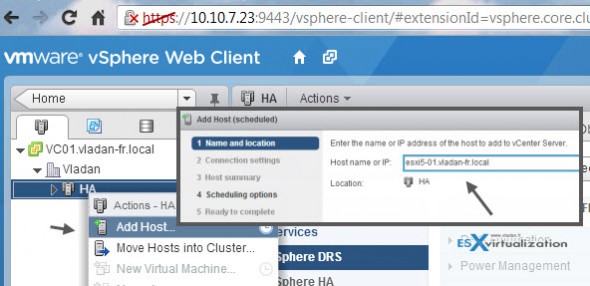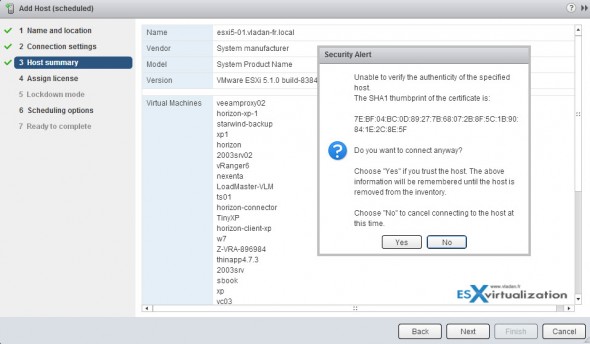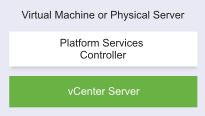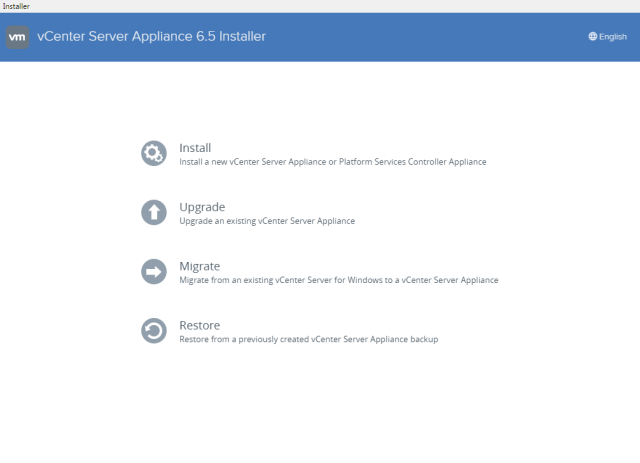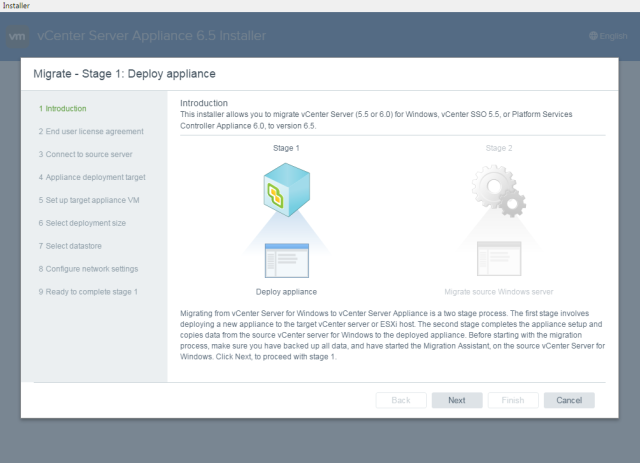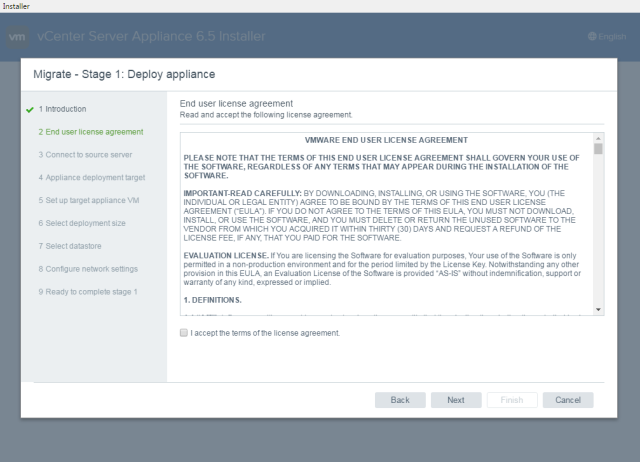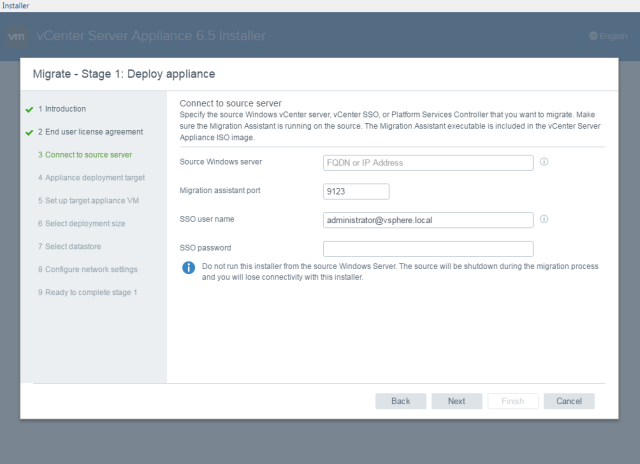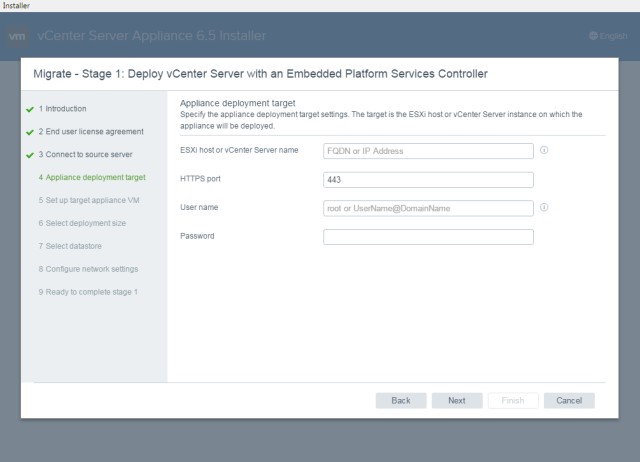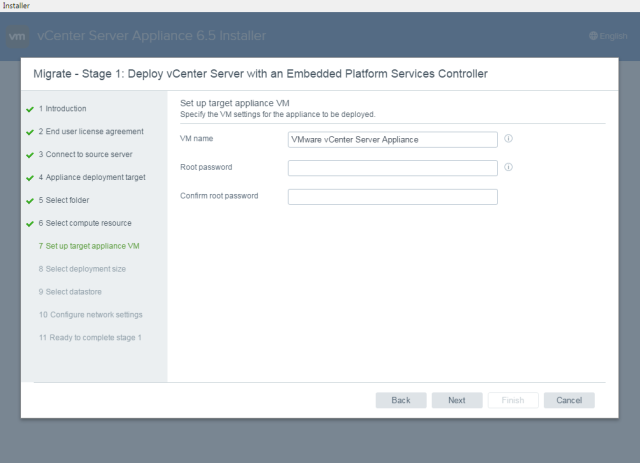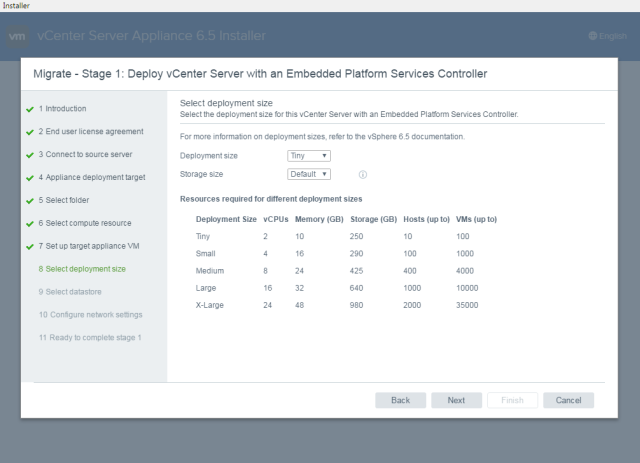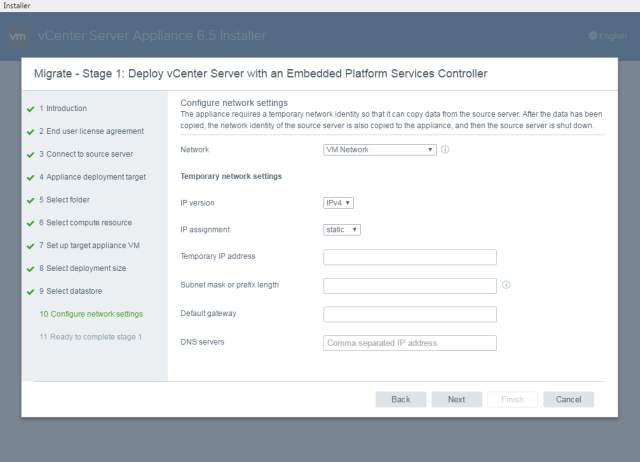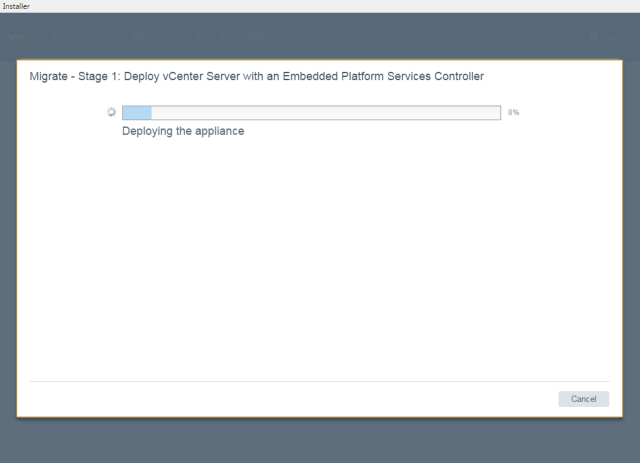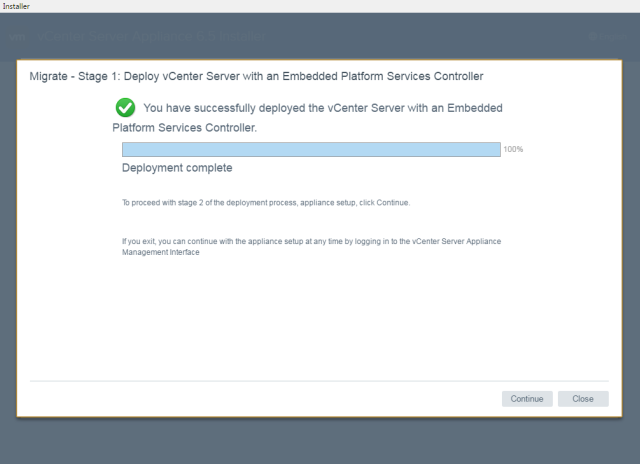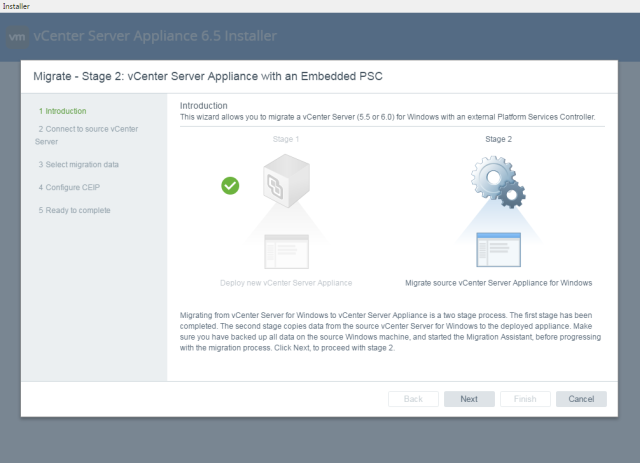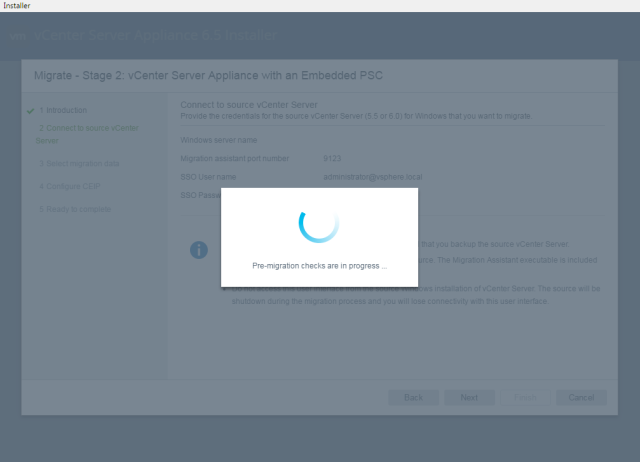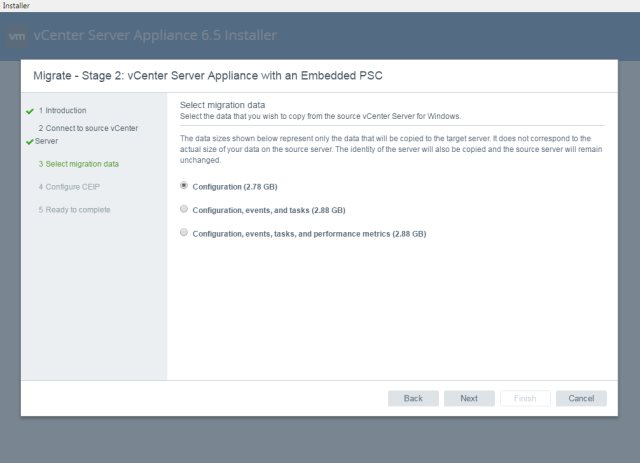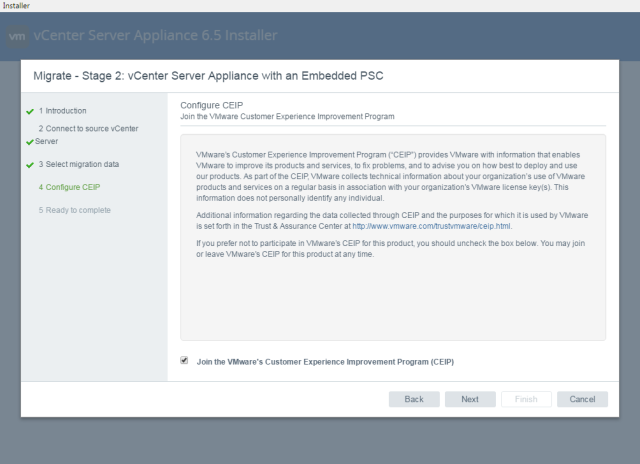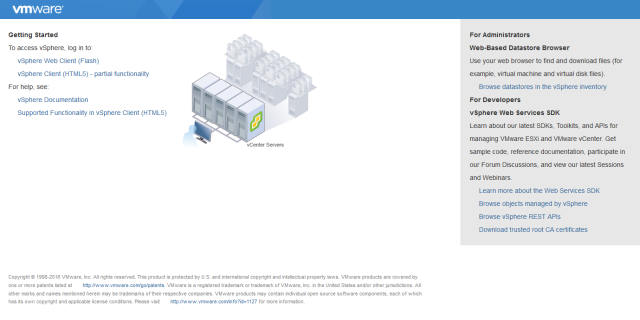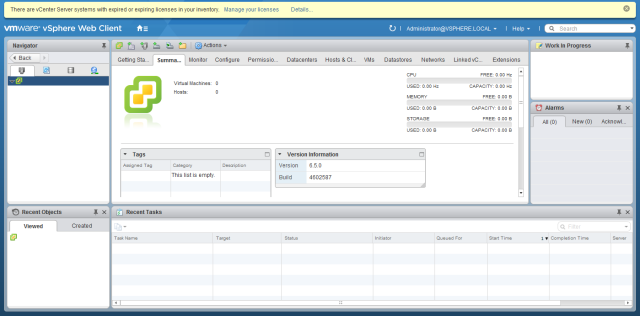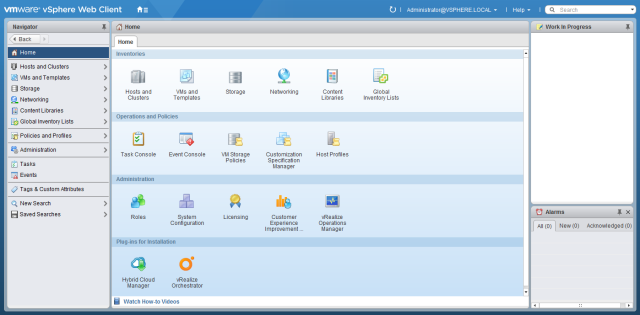VMware High Availability (HA) components
VMware vSphere High Availability (HA) is composed from three main components, which each of them plays different role.
- FDM – Fault Domain Manager is responsible for communication between hosts which are part of the cluster, informing other members about available resource, and VMs state. FDM manages the restart of VMs in case host fails.
- Hostd Agent – responsible for communication between hostd and vCenter. If this agent has a problem, then HA stops functionning. Restart possible from DCUI – Under Troubleshooting Options >Enter > F11 >restart the services OR through the CLI… ./sbin/services.sh restart
- vCenter Server – is used to deploy and configure FDM agents inside the cluster. Manages the election of server elected master. If the whole vCenter server (or just the service) fails, the HA still continues to work.
Basic two hosts HA cluster running in my lab.
To be able to create cluster with ESXi hosts, a vCenter is needed. The most basic package, vSphere Essentials cannot be used since the limited licensing does not allow you to create HA cluster as only vSphere Essentials Plus allows you to do that. The essentials package basicaly allows you manage three hosts from central location which is – vCenter server for essentials.
The Essentials Plus allows you not only create HA cluster, but provides also vMotion, Enhanced vMotion, and also many other products which are part of the Essentials Plus bundle:
- vSphere Data Protection (backup product)
- vSphere Replication (VR) can replicate VMs to another host for DR scenarios – supports VSS) .
- vShield Endpoint ( AV, Security)
Essentials Plus is an entry level package for small business which needs to consolidate (virtualize) like 20-30 physical servers, and make the VMs be high available. Any hardware failure of the physical hosts enables the automatic restart of VMs on another host in the cluster.
VMware vSphere High Availability Cluster Requirements
There are many requirements for VMware HA. First one of thm is to have the right VMware vSphere license, as I mentioned above. Here are other requirements:
- vSphere Essentials Plus or higher.
- Shared Storage – you’ll need some kind of shared storage. I say some kind, since you can use dedicated storage device (NAS, SAN) or also you can use other (software based) products which emulate the shared storage, like VMware VSAN, or any NAS or SAN hardware device.
- CPU compatibility between the hosts – the ideal cluster is a cluster with exactly same hardware and memory size. Small 3 host cluster allowing to run 20-30 VMs will satisfy most of SMBs. But you can use VMware EVC to adjust cluster settings for CPU compatibility.
Once you install vCenter Server, configure a network of each of your ESXi hosts, you can start creating your cluster. Each of your hosts should have redundancy assured by using at least two physical NICs for each network:
- management network
- VM network
- vMotion network
To make this article shorter, I’m skipping the network configuration now. The installation of the vCenter server on Windows Server OS is another piece which is not covered in my article as you can simply use easy install or you can deploy vCenter Server Appliance (vCSA) – read my detailed article:
- How to deploy VMware VCSA 6.5 (VMware vCenter Server Appliance)
The vCSA has the advantage that its all-in-one prepackaged product, part of the bundle, and so no need to install the individual components one by one.
Another requirement for creating VMware HA cluster is solid DNS architecture with forward and reverse zones created and working. If not already done, create on your DNS server the necessary records now.
Let’s create datacenter and cluster now.
To do so, fire up vSphere Client and go to Hosts and clusters
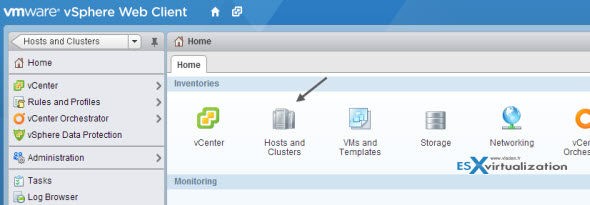
Then, position yourself on the Manage Tab > right click the vCenter server > New datacenter
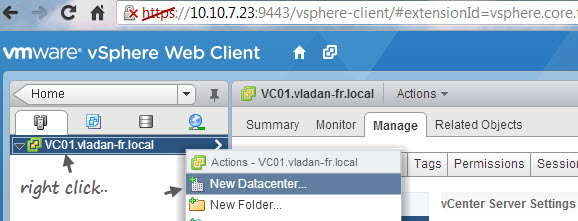
Once done, you should see new icon appear. I called my Datacenter vladan. -:). Then again, right click the datacenter you just create and create new cluster.
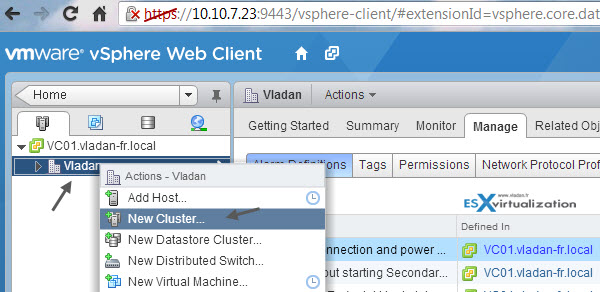
While going through the assistant you’re asked, if you want to Turn On DRS and Turn On HA. If you’re on the Essentials Plus licensing, you’ll get a pop-up saying that Essentials Plus isnt’s available, or something like this. As the DRS is available only in Enterprise and Enterprise Plus.
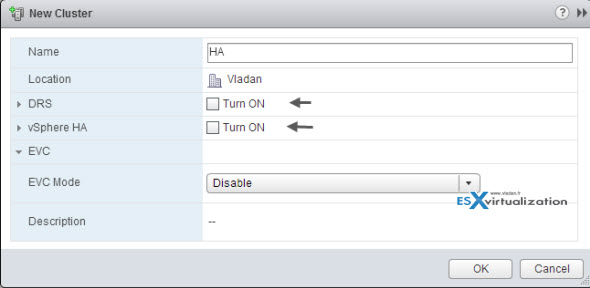
If you don’t want to activate those options now, you can leave unchecked, and continue the assistant.
You can do exactly the same steps by using the vSphere Windows Client, as a configuration of VMware vSphere (HA) cluster is still the base element of VMware, and the new vSphere Web Client only brings new functions like vSphere Enhanced vMotion or deployment and management of vSphere Replication.
So we have Datacenter, we have a cluster. Now we need to add our ESXi hosts to our cluster. To do so, just follow those steps, right-click (I like right clicking) the HA cluster we just created > Add Host
As you can see, my host’s FQDN (fully qualified domain name) is esxi5-01.vladan-fr.local
You’re prompted for a root password on that host.

And also, you’ll receive a security prompt before validating the assistant…
The last point is to attach a license. In my case, the license has already been entered in vCenter server, so I can assign that license to that host. When you first installing your hosts and vCenter server, you have 60 days for entering your license, and here through this assistant you wan use the Evaluation Mode license. But after 60 days, the VMs will get disconnected from vCenter and the HA won’t function.
Optionally, to reinforce your company’s security, you can prevent login directly to the host and check Enable lockdown mode. Users will be forced to login only through vCenter….
Finally, you can schedule the task. This might be useful in certain scenarios where you’re adding new hosts into the existing cluster where there are already some hosts.
That is it. Last page of the assistant ask you about scheduling the task. Click the change > and select the Run this action now radio button.
This assistant had seven pages. At any moment you can click on the right top corner, where are the two small black triangles. By clicking that it will interrupt the assistant and sends it with a cool animation to the Works in Progress window on the right hand side. You just added the host to your cluster. Do the same for the other host(s), knowing that minimum two hosts are necessary to form a HA cluster.
By clicking the propriety of the cluster you can configure the Host Monitoring, enable Admission Control and also use VM monitoring. I’m going to return back to this article, and complete the explications for those options.
This article does not mean to have all details about HA and clustering, and there are many books and websites which goes much deeper. For the sake of simplicity, this article is here to help people which are new to VMware, new to clustering, new to this terminology. vSphere 5.1 brought new vSphere Web client, and so the screenshosts done through the new vSphere Web client are different.
The time necessary to configure vSphere cluster depends on many things, but it an be done quite fast when all prerequisites are met and all components and hosts are already installed and configured.

